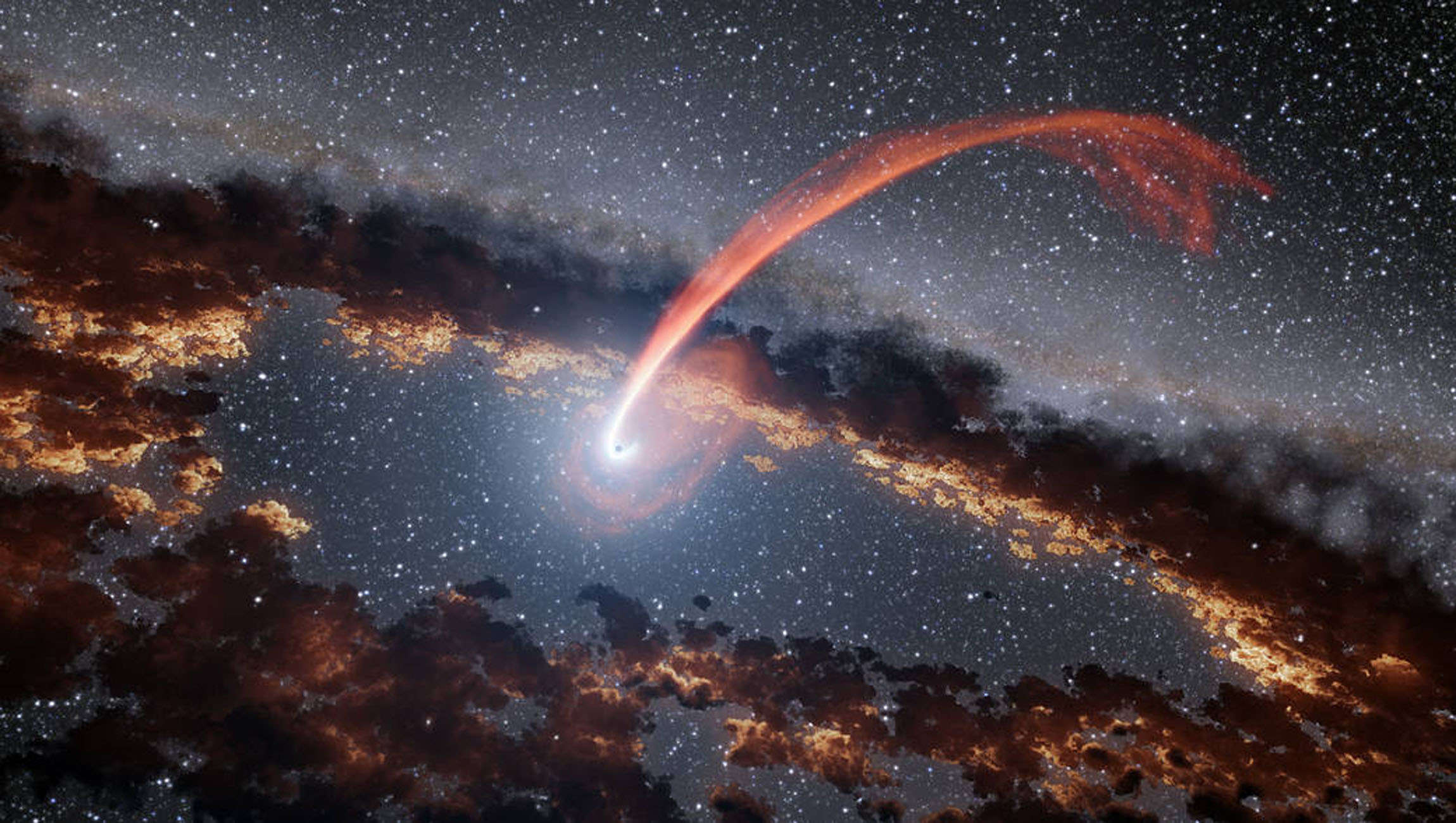Create a free profile to get unlimited access to exclusive videos, sweepstakes, and more!
Could a black hole be the ultimate energy source? Maybe, if you keep feeding it

Space might be where most powerful and just about limitless repositories of energy are lurking. We just don’t know how to harness it yet.
Black holes are kind of like dragons guarding their lairs full of treasure. Sure, they’ll give you that thing you’re looking for—but they always want something in return. Say you were able to snare escaped energy from a black hole (they supposedly don’t devour everything). What the black hole would require as payment is a gargantuan amount of energy, because otherwise, it would evaporate into the void over billions of years. Now a team of scientists have been able to, at least in a lab, prove a theory that sounded like pure science fiction. It might someday mean a new frontier in how we harness power.
“Low-frequency acoustic modes with orbital angular momentum are transmitted through an absorbing rotating disk and amplified by up to 30%,” said physicist Marion Cromb, who recently led a study published in Nature Physics, adding that “These experiments address an outstanding problem in fundamental physics and have implications for future research into the extraction of energy from rotating systems.”
That sound amplification is the result of the rotational Doppler effect, as opposed to a linear Doppler effect, in which the frequency of a wave shifts because of the relative velocity between the observer and the source of the wave. The rotational Doppler effect is the result of an increase or decrease in wave frequency between an object rotating on an axis and the observer. In this case, sound waves produced by Cromb’s team were sent toward a spinning foam disc, and measuring them from this rotating surface revealed that they changed their pitch when measured from that surface because they had been twisted. Microphones caught the difference in sound.
If the surface rotates fast enough, it can warp the sound waves into going from a positive to a negative frequency and actually seize energy from the surface rotation. But where did even the possibility to pull off something like this come from?
Time-warp to 1969, when physicist Roger Penrose came up with what probably sounded like a potential idea for the next sci-fi blockbuster at the time. What Penrose suggested was that the energy produced by a rotating black hole could possibly be extracted, at least if you had a structure huge enough and powerful enough to rotate at the same rate as the black hole so you could lower and then release a mass from it. His contemporary Yakov Zel’dovich figured out that instead of a black hole, which you can’t exactly drag back to Earth, a rotating object capable of absorbing energy like a black hole could amp up electromagnetic waves and vacuum fluctuations so long as they had angular momentum. If a hypothetical object rotates on an axis, it has angular (as opposed to linear) momentum. Vacuum fluctuations or quantum fluctuations are temporary changes in the amount of energy present anywhere in space.
Fast-forward to 1974 and Stephen Hawking’s hypothesis that basic black holes which have only an event horizon, a singularity and an inert core can thermally create subatomic articles and send them zooming into space. The emitted particles are Hawking radiation. Without any star stuff to feed it, the black hole will drain its own energy until it completely evaporates. It is the intense gravity of a black hole that is thought to produce particles and their anti-particles just outside the event horizon, the black hole’s point of no return. The positive particle might escape as thermal radiation while the negative particle falls into the singularity, never to return.
Hawking radiation has been proven to be at least theoretically viable. This is what eventually led to Cromb’s team trying to capture similar energy produced with sound waves instead of light waves, and inevitable evaporation without more energy also explains why you have to keep feeding the monster.
“Although amplification of waves due to a rotating absorber is very hard to verify with optical or electromagnetic waves, direct measurements of it are possible using acoustic waves," Cromb said. “Similar concepts could in principle be extended to electromagnetic waves, thus possibly extending our results to the amplification of electromagnetic modes from the quantum vacuum.”














